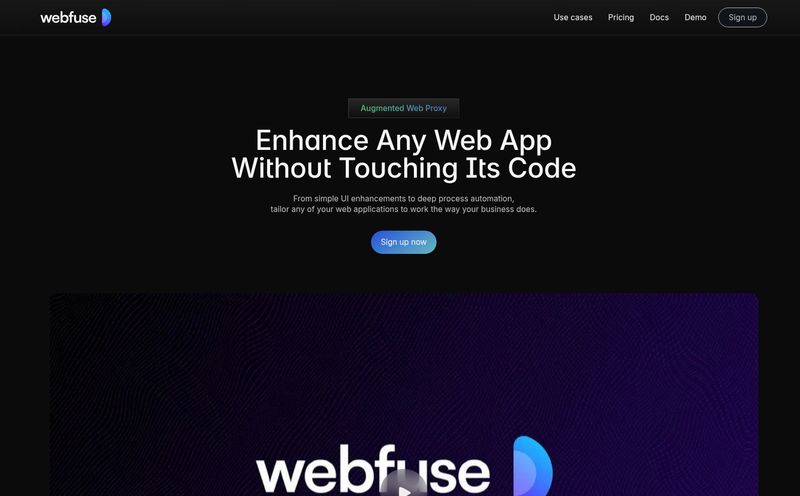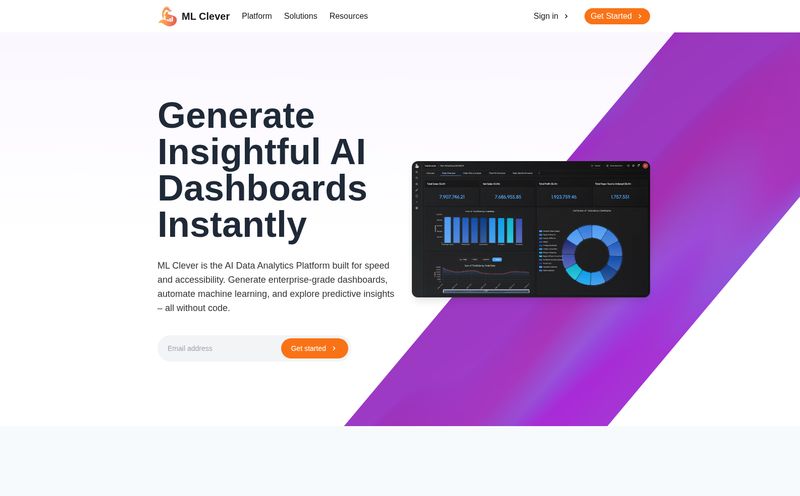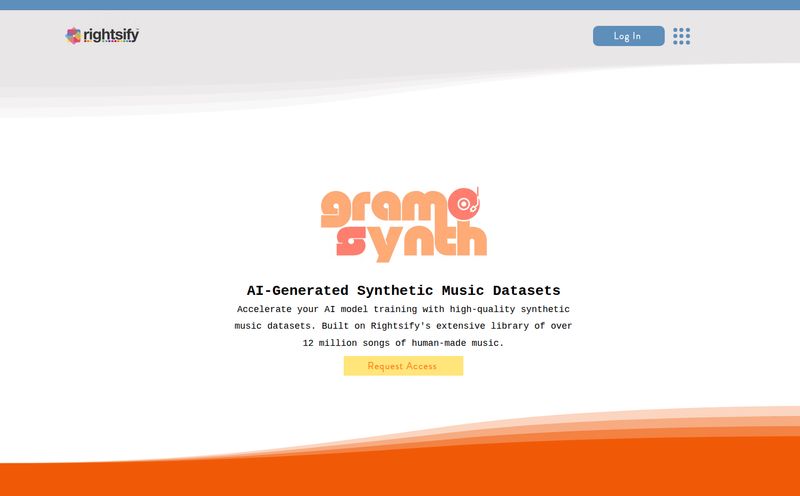I’ve been in the SEO and digital marketing space for long enough to see trends come and go like seasons. But the AI explosion of the last few years? This feels different. It feels foundational. Every other day there’s a new tool, a new model, a new something that can write copy, generate stunning images, or analyze market data in a blink.
It’s easy to get caught up in the flashy final products—the Midjourneys, the ChatGPTs, the Stable Diffusions. But I’ve always been the type to look under the hood. To ask the nerdy questions. And the biggest question of all is: Where does all this AI data come from?
It’s not magic. These models are “trained” on gargantuan amounts of information. And for a long time, the best, biggest datasets were locked away in the digital fortresses of Google, Meta, and other tech giants. If you were an independent researcher, a student, or a small startup, you were pretty much out of luck. Until a scrappy non-profit decided to change the game. Meet LAION.
So, What in the World is LAION?
LAION stands for Large-scale Artificial Intelligence Open Network. And honestly, the name is a perfect, no-frills description of what it is. It's a Germany-based non-profit organization with a simple but radical mission: to make massive machine learning resources open and accessible to absolutely everyone. Freely.
Think of it less like a polished software product and more like the world's biggest, most chaotic public library. They don't create the books; they just go out and collect everything they can find, index it, and give you a library card. In this case, the “books” are billions of image-and-text pairs they’ve found on the public internet.

Visit LAION
This approach is a direct counter-punch to the walled-garden philosophy of Big Tech. LAION believes that progress in AI shouldn't be dictated by who has the deepest pockets to build proprietary datasets. It’s about democratizing access, and I’m here for it.
The Heart of the Beast: The LAION-5B Dataset
When people in the know talk about LAION, they're usually talking about its crown jewel: LAION-5B. The 'B' stands for billion. This dataset contains an almost incomprehensible 5.85 billion image-text pairings. It’s the raw material, the creative fuel, that powers some of the most famous text-to-image models out there, including Google's Imagen and the open-source darling, Stable Diffusion. Without LAION, the AI art revolution simply wouldn't have happened on the same scale, or with the same accessibility.
The Good, The Bad, and The Unfiltered
So, is LAION the perfect solution? The silver bullet for AI development? Of course not. Nothing is. It’s more of a wild, powerful, and sometimes problematic force of nature. It’s like a sprawling national park—full of incredible beauty and resources, but you have to be prepared for some rough terrain.
The Advantages of an Open Playground
The biggest pro is right there in the name: it's open. This levels the playing field in a way that’s hard to overstate. Researchers without a FAANG-level budget can suddenly work with world-class, large-scale data. This fosters an incredible amount of collaboration and shared knowledge. It also promotes a greener approach to AI. Instead of countless organizations re-scraping the web (a very energy-intensive process), they can reuse the dataset LAION has already compiled. It's a surprisingly eco-conscious angle that I really appreciate.
| Benefit | Why It Matters |
|---|---|
| Open & Accessible | Democratizes research, allowing anyone to experiment and innovate. |
| Massive Scale | Provides enough data to train truly complex and capable AI models. |
| Eco-Friendly | Reduces redundant web crawling, saving significant computational energy. |
The Challenges of the Wild West
Now for the other side of the coin. LAION's greatest strength—its unfiltered, web-scraped nature—is also its' greatest weakness. The data quality is... variable. To put it mildly. Because it’s a snapshot of the public internet, it contains the good, the bad, the beautiful, the ugly, and the outright bizarre. This means models trained on it can inherit all the biases, stereotypes, and toxic content that exists online.
Using it effectively also isn't for the faint of heart. You'll need some serious computational horsepower and a good bit of machine learning know-how to sift through, filter, and actually train a model with this data. It's not a drag-and-drop solution. In fact, while I was digging around for this article, I hit a 404 error page on one of their GitHub links. It was a funny, humbling reminder that this is a passion project, not a slick corporate service with 24/7 support.
Let's Talk About the Price Tag
This is my favorite part. How much does it cost to access this multi-billion-entry dataset that's powering a technological revolution?
Zero.
Nothing. Nada. Zilch. Since LAION is a non-profit organization focused on open research and education, its resources are free. They operate on donations and volunteers. This is a monumental detail in an industry where data is the new oil, and usually priced like it. For teams and individuals who could never afford to license a proprietary dataset, LAION is nothing short of a godsend.
Who Is This Really For?
So, should you rush off to download LAION's datasets? Well, it depends on who you are.
- AI/ML Researchers & Academics? Absolutely. This is your playground.
- Computer Science Students? Yes. It's an incredible resource for learning and building portfolio projects.
- Indie Hackers & Startups? A huge maybe. If you have the technical chops and are willing to do the hard work of data cleaning, it could be your secret weapon.
- A marketing manager looking for a quick tool? Probably not. You’re better off using the tools built on LAION’s data, not the raw data itself.
It’s a foundational layer, not a finished product. And that’s perfectly fine.
The Bigger Picture and the Ethical Tightrope
We can't talk about LAION without touching on the ethics of it all. The practice of scraping web data is a legal and ethical grey area. Does posting an image publicly grant implied consent for it to be used in an AI training set? Artists, photographers, and many others would argue a firm 'no'. Court cases are ongoing, and the debate is fierce.
LAION's stance is that they only store URLs and the alt-text descriptions, not the images themselves, and they provide tools for artists to request their work be removed. But it's a complex issue. However, I personally think that by having this data out in the open, it actually allows us to study the biases and problems within these models more effectively. It's hard to fix a black box when you can't see what's inside.
Frequently Asked Questions about LAION
- What does LAION stand for?
- LAION stands for Large-scale Artificial Intelligence Open Network. It's a non-profit dedicated to providing open-access AI datasets and models.
- Is using the LAION dataset legal?
- This is a hot topic. LAION operates in a legal grey area, largely centered on the principle of 'fair use' or 'fair dealing' for research purposes. The legality, especially for commercial use, is still being debated in courts around the world.
- Can I use LAION for a commercial project?
- You can, but you have to be careful. Because the dataset links to images all over the internet, some of those images are copyrighted. Using a model trained on LAION is one thing; directly using the images is another. It's recommended to consult with a legal expert if you're building a commercial product based on it.
- How is LAION different from a dataset like ImageNet?
- ImageNet is a classic, but it's much smaller and carefully hand-labeled by humans for classification tasks (e.g., 'this is a cat'). LAION is orders of magnitude larger, completely uncurated, and consists of image-text pairs scraped from the web, making it suitable for generative models.
- Do I need a supercomputer to use LAION's data?
- You don't need a national lab, but you can't process the full dataset on a standard laptop. You'll need significant storage, a powerful GPU, and plenty of RAM. Many researchers use cloud computing services to handle the load.
- Where can I access the LAION datasets?
- You can find information on their official website, and the datasets themselves are often accessible through platforms like Hugging Face, which makes them easier to work with.
Final Thoughts
LAION isn't polished, and it isn't perfect. It's a messy, sprawling, and fundamentally human endeavor to make a powerful technology accessible to all. It represents a belief in the power of open-source collaboration over proprietary hoarding. For all its flaws and controversies, it has undeniably pushed the field of artificial intelligence forward in a more democratic direction. And in a world where technology can often feel like its being built behind closed doors, a project like LAION feels like a breath of fresh, if somewhat chaotic, air.
Reference and Sources
- LAION Official Website: https://laion.ai/
- Stability AI (creators of Stable Diffusion): https://stability.ai/stable-diffusion
- LAION on Hugging Face: https://huggingface.co/laion



